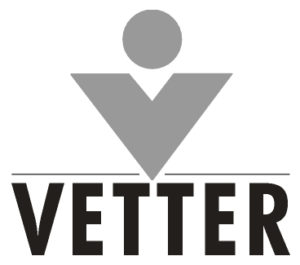Creating Your Secondary Packaging Strategy - Begin With the End in Mind

By: Ingo Schraut, Product & Service Manager, Vetter Pharma International GmbH
Whether it is meeting the needs of a rapidly aging market, blocking drug counterfeiters, or differentiating your pharmaceutical product in the market, a secondary packaging program is an important factor in helping you achieve success. Too often, when it comes to clinical Phase 3, pharmaceutical and biotechnology companies focus their attention primarily on upcoming manufacturing scale-up and regulatory requirements, not a secondary packaging strategy. However, decisions made, or not made in this phase, can have a direct impact on the future of your drug product. But when does one begin creating a strategy for secondary packaging? We believe the best starting place is when the choice for the primary packaging is about to be made. In secondary packaging, as in all complex projects, begin with the end in mind:
-Take a holistic and early view as a key success factor
-Consider the strong interdependence in the pharmaceutical field
-Seek broad expertise and early involve all stakeholders

As a globally leading Contract Development Manufacturing Organization (CDMO), our experience has consistently demonstrated that the following considerations are among the most important when it comes to developing a secondary packaging strategy for injectables.
Impact of Primary Packaging
No doubt, the choice of a primary packaging has a strong impact on secondary packaging. For example, if you plan to combine your syringe with an auto injector or safety device, making certain the assembly machine is able to handle the primary container and that the syringe is designed to resist higher mechanical forces is important. When launching a drug in an auto injector, even when setting up on an existing platform, studies are required and extra time for device customization must be considered.
Regulatory Challenges
There are a number of regulatory hurdles that can affect secondary packaging. For example, additional market approval and documentation demands for more sophisticated solutions, such as auto injectors, can have an impact on timing. As a service provider, we often encounter customers that plan to launch several variants, like syringe and auto injector, at the same time, essentially resulting in a staggered market launch. Country-specific regulatory requirements, e.g., additional labels or mandatory variable data, can also place demands for extra space on the packaging itself.
Due to the different country and packaging variants, a previous big batch size in filling often melts down in many different saleable units in secondary packaging. Therefore, a dedicated launch and supply chain strategy will ensure the most expeditious time-to-market.
Specific Indication & Market Requirements
Because drug products have differing indication specific requirements, usage can have wide variations. For example, when it comes to handling ophthalmic syringes utilized in a professional setting, they are quite sensitive and differ significantly from syringes for home use, such as drugs for arthritis. Also, age and educational level have an impact on the drug administration. The best possible solution is clearly focusing on the administration use case. Planning extra time for differing country/market specifics will also be important. Never underestimate the internal approval process and extra time needed. For example, in creating and getting approved differing artwork for multi-country/market labels and booklets. As always in pharma, the reimbursement landscape can impact your market approach and secondary packaging solution.
Differentiation From Competition
A deep understanding of target groups and usage will build a solid opportunity for successful differentiation against competition – supporting life cycle management from launch to the later stages of a product’s life cycle. Issues to be considered include customer convenience and product usability, which relate to adherence and patient safety. Remember that convenience and enhanced user experience can be contradictory with simplification in production/assembly and market approval. Enhancing drug delivery in terms of reliability and convenience can be drivers for an active product lifecycle management strategy and help differentiate the product in the market.
In Conclusion
Changing markets and regulations may require a rethinking of a compound’s secondary packaging. In many cases, a secondary packaging program that is well-conceived from the start allows drug products to meet the challenges of diverse global markets. A highly qualified CDMO with significant expertise in dealing with complex packaging solutions can safeguard the product’s quality throughout the packaging process. As a global partner, Vetter has great experience in developing and implementing secondary packaging and offers its customers a broad spectrum of services. Beginning with the end in mind should be your first step in the journey of creating an effective packaging strategy.
About the Author
For the past 6 years, Ingo Schraut has been working for different companies as international product manager, focusing on building up new business segments that embed complex products into a challenging process landscape, such as OR integration and telemedicine. Since 2018. Ingo has been working for Vetter Pharma International as a product and service manager. Ingo is part of Vetter’s dedicated secondary packaging team that is constantly looking for opportunities to enhance offered services and streamline processes. This includes for example safety devices for syringes, pens, auto injectors, and kit packaging of vials. Ingo earned a Master of Engineering in Medical Engineering from the University of Applied Sciences, Ulm, and a Diploma in Media Technology from the Hochschule der Medien, Stuttgart.
Total Page Views: 3018














